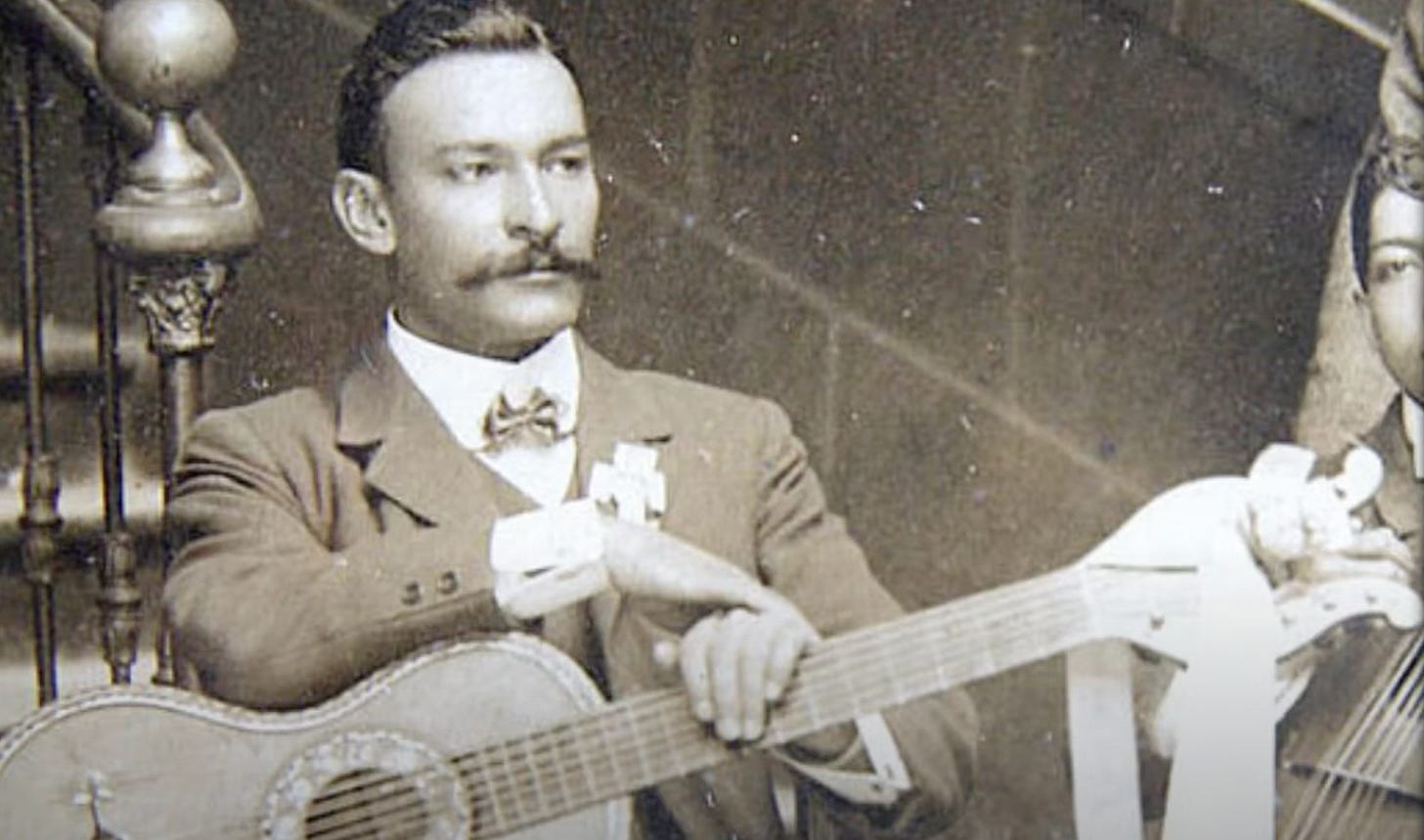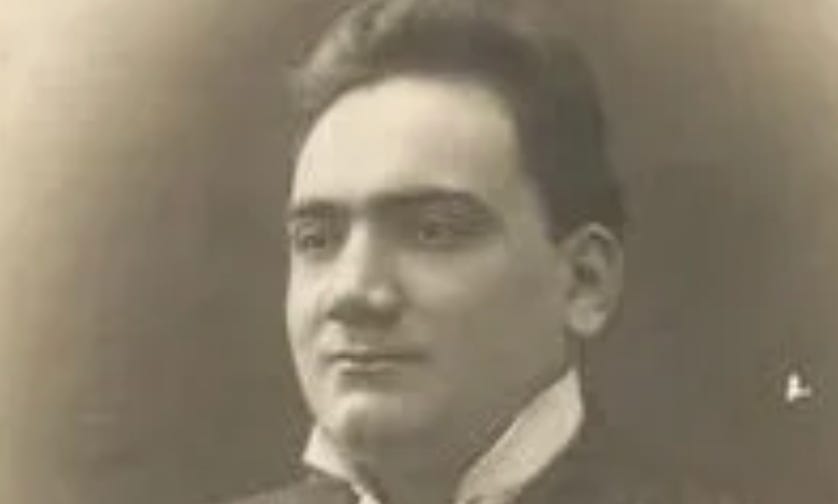The United States has intensive sound recording public domain laws as to when copyrights revert from private ownership. Europe’s laws are very different than ours, having copyrighted material entering the public domain much before they do in the US, which causes a whole lot of confusion and problems when it comes to reissuing music. In the US, any sound recording released before 1946 that celebrate 100 years of release will be in the public domain: they can be enjoyed, used, traded, sold, manipulated, gifted, regifted…you get the drift (there are complexities around certain super rare recordings that only one owner has a source for, and we can discuss that at another point).
There is a movement to shine a light on the recordings that enter the public domain in 2022, to bring awareness to a treasure chest of amazing recordings that were released from the dawn of record making in the 1800s until 1923. The Association for Recorded Sound Collections (ARSC), home to many people who oversees audio collections, as well scholars, musicologists, ethnomusicologists, researchers, appreciators, collectors…people who are interested in the deep dive of audio recording history and preservation…is helping this campaign by conducting a membership survey of what ten records would be best used to showcase the true greatness of the first years of the recording industry.
I got the survey last week…dozens of recordings that a panel of experts put together that offer stories of the early great recording artists, the many “first” recordings of their kind…the recordings that planted the seeds for what was to come. And when listening to them, I started thinking deeply about what kind of recordings would be best to highlight from the batch. Should it be the ones deemed most “important” to the story of the recording industry? Should it be the recordings featuring the biggest named artists and/or the recordings that showcased something that represented a “first”—first piano recording, first scat singer, etc. I came to the conclusion that while all the recordings chosen should be important for one reason or another, that they should offer an incredible listen to whomever decides to jump in.
For this edition of The Signal, I am going to showcase some of the great recordings from the list (It should be noted that African Americans were often not given the opportunity to record during these years while blackface/minstrel performers became popular recording artists. I decided to avoid the artists and recordings from the minstrel genre, not trying to erase history, but to instead celebrate what in my opinion are the best aspects of the history.)
CRAZY BLUES by Mamie Smith and Her Jazz Hounds (1920)
Crazy Blues is considered to be the first true blues recording. It is a crazy story of how the recording came about. August 10, 1920: the great Sophie Tucker was too sick to go to her scheduled recording session and the songwriter of Crazy Blues, Perry Bradford, pushed for the versatile Smith to replace Tucker for the day. The song became a huge hit, and suddenly record executives realized that they could make good money promoting black music to a black audience. A whole world was opened.
VALS AZURE by Octavino Yañez (1908)
There are not a hell of a lot of guitar-based recordings from these early days. Octavino was discovered by the folks at Edison being that he was “acknowledged champion guitarist in Mexico.” He was recorded in Mexico by New York engineers George J Werner and Fred Burt in the early 1900s. The Vals Azure…the Azure (blueish?) Waltz…brought the Spanish/Mexican sound to whole new audiences across the continent, a sound that also influenced the future styles of classical guitar.
SOME OF THESE DAYS by Sophie Tucker (1911)
Besides unintentionally being sick and giving Mamie Smith a shot at stardom, Sophie Tucker, "The Last of the Red-Hot Mamas,” reigned supreme in the early years of the last century, known for her risqué subject matter long before Mae West made the scene. Some of These Days was Tucker’s signature song…oft recorded, with this version a stand-out including a great preamble and a showcase of her powerful, emotive pipes. Ah those vaudeville years…so sweet.
ORY’S CREOLE TROMBONE by Ory’s Sunshine Orchestra (1922)
While Jelly Roll Morton is considered the father of Jazz, another New Orleans musician, Kid Ory, recorded before him…this track considered to be one of “the first sides by a New Orleans African-American Jazz band to be commercially issued.” Ory would go one to have a huge career saluting and recording the old time Dixieland music that he helped make famous.
COME ALONG MY MANDY by Nora Bayes and Jack Norworth (1910)
The Bayes/Nortworth team was so popular, that in 1944 there was a movie made about their lives together, husband and wife taking over the world. A major part of the Tin Pan Alley scene, they penned such classics as Shine On Harvest Moon…and the evergreen sing-along Take Me Out To The Ballgame (which Norworth wrote with Alber Von Tilzer) (the chorus is the only part anyone really knows). And while Come Along My Mandy is not as well-known as the others, it is a sweet, fun ditty from another age, another world.
LIEBESLEID arranged and performed by Sergei Rachmaninoff, composed by Fritz Kreisler (1922)
This piece blew me away—I just didn’t know you could hear recordings of Rachmaninoff from these early years. Rachmaninoff had already prominently established himself as a great composer and performer and had recently immigrated to the US from Russia following Lenin’s October Revolution. This recording was made shortly after. Just stunning.
VESTI LA GIUBBA by Enrico Caruso (1902)
Four years before he sang in San Francisco on the eve of the great earthquake, Caruso became one of the first operatic performers to be recorded and released commercially. I first heard this recording of Vesti La Giubba through a mind-blowing sound-altered piece that experimental artist Charles Dodge produced in 1980. The original recording shows off what all the fuss was about around Caruso, full of emotion and vigor.
LA PATTI NEGRA—DANZON by Orquesta de Pablo Valenzuela (1907)
Holy crap, there were recordings made in Havana, Cuba in the early turn of the last century. This is NOT your Buena Vista Social Club sound…this is something much earlier…and equally beautiful. La Patti Negra is a portal to another world that introduced American audiences to the sounds of the Island. Pablo Valenzuela was a leading Cuban clarinetist who grew this orquestra with his brother Raimundo. When his brother died, he took over and began a recording onslaught, laying down 120+ numbers for the three big labels: Edison, Columbia and Victor.
EIL MOLEI RACHMIN by Gershon Sirota (1908)
Sirota was a famous chazzan from Warsaw during the "Golden Age of Hazzanut." Known as The Jewish Caruso, he became so popular that he eventually found his way to Carnegie Hall, where he packed the venue. This recording showcases a beautiful background chorus that seemed to lend itself to a more commercial audience. Because of his constant touring and commercial ambitions, he eventually left performing at his synagogue. He stayed in Warsaw however and died in the Warsaw Ghetto Uprising of 1943.
NOBODY by Bert Williams (1906)
During a time from black artists were given so little opportunity, Bert Williams broke through, becoming the first black performer to have a lead in a Broadway production, (In Dahomey, 1903), as well as the first black actor to have a lead role in a film (Darktown Jubilee, 1914). He was a huge vaudeville star who W. C. Fields called "the funniest man I ever saw—and the saddest man I ever knew" (the latter due to how the racial tensions he experienced with everything he did impacted him). I love the swagger of his recitation here.
I hope you enjoyed this walk down incredible music recording history. Happy Thanksgiving…and Happy Chanukkah! I’ll talk more about it next week, but there is a beautiful new Chanukkah record that guitarist Jeremiah Lockwood put together, if you are looking for something to listen to on Sunday Night as the first candle is lit. If you are in the Bay Area Sunday night, he is playing at The Sweetwater.
ARSC is an incredible organization…and worth becoming a member if you are interested in the history, preservation, discussion and appreciation of recorded sound.













